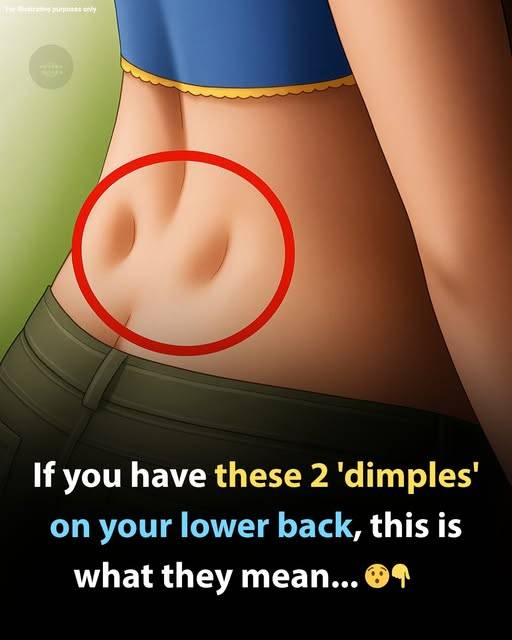Lower back dimples often seen just above the crease where the buttocks meet the lower back are small, symmetrical indentations located near the connection point of the pelvis and spine. In anatomical terms they lie over the sacroiliac joints, where the sacrum meets the iliac bones of the pelvis. In casual language they are sometimes referred to as “Venus dimples” (on women) or “Apollo dimples” (on men).
What Causes Them?
These dimples are formed primarily by short ligaments that link the skin to the underlying posterior superior iliac spine of the pelvis. Because these ligaments lie just beneath the skin in that region, they produce a slight inward indentation that becomes visible when the overlying fat layer is thin or when the body is well-toned. The presence of these dimples is strongly influenced by your bone structure and ligament placement—so genetics play a large role. While some may try to emphasise their appearance through diet and exercise, you cannot truly create them if they were not present already.

Normal vs Concerning Dimples
It’s important to distinguish between these paired lower-back dimples (on both sides of the spine) and the more central “sacral dimple,” which is a single indentation located just above the crease of the buttocks. The paired dimples are generally benign and purely cosmetic. On the other hand, a sacral dimple may sometimes be associated with underlying spinal or neurological conditions—especially when accompanied by other signs such as skin tags, tufts of hair or discolouration near the site. In those cases further medical evaluation may be recommended.
Why Are They Popular?
Culturally, lower-back dimples are often seen as an attractive physical trait. The name “Venus dimples” derives from the Roman goddess of beauty and love, and the feature is often linked with aesthetic ideals—symmetry, tone and an elegant back silhouette. Although there’s no solid scientific evidence that these dimples correlate with fertility or sexual health, the visual appeal is acknowledged in various beauty and fitness circles.
Can You Enhance Their Appearance?
If you already have the anatomical structure to display these dimples, a leaner lower-back region can help make them more obvious. Reducing body fat in that area and building core and lower-back muscle tone can accentuate them, however this works only when the ligament-bone structure is already present. If the dimples do not occur naturally, no amount of exercise can truly create the ligament-skin indentation—surgical options exist, but they are elective and come with risks.

Key Takeaways
- Lower-back dimples are usually harmless anatomical features: indentations formed by ligaments near the pelvis and spine.
- They are mostly cosmetic, more common in women, and depend heavily on genetics and body composition.
- They should not be confused with a central sacral dimple, which may occasionally signal underlying spinal issues if accompanied by other warning signs.
- If present naturally, they can be enhanced via healthy weight management and targeted exercise—but they cannot be “made” if absent.
- Ultimately, while admired for their aesthetic effect, these dimples have no proven link to health, fertility or physical performance.
Conclusion
In short: if you notice these indentations on your lower back, there’s no need to worry—they’re simply a unique, natural feature of your anatomy.

















